Form 1582/1583 Motorcycle Awareness Survey
Survey on Driver Awareness of Motorcycles
MC Awareness Survey_Questionnaire
Questionnaire
OMB: 2127-0761
OBRS, NPD-310, NHTSA
Motorcycle Awareness Survey Instrument
Final Survey Draft
You are invited to take part in a research study about peoples’ opinions, knowledge, and experiences (in the United States only) regarding driving in general, as well as interactions with other vehicles on the road, especially with motorcycles. This survey is sponsored by the National Highway Traffic Safety Administration (NHTSA).
If there is more than one person living or staying in this household, the survey should be completed by the person, age 18 or older, with the next birthday. If you choose to participate, you will receive $10 in cash in appreciation for completing this survey.
It is important that you know:
The purpose of this study is to gather information about peoples’ knowledge about and attitudes toward motorcycles.
The information gathered through this study will be used to inform traffic safety messaging campaigns and initiatives.
You may want to participate in this study if you would like to help improve traffic safety messaging.
This survey is for people age 18 years or older.
This survey uses multiple-choice style questions and should take no more than 15 minutes to complete.
There are no right or wrong answers; your honest feedback is what is important.
Your participation is voluntary, and you can stop at any time.
All survey results will be anonymized such that your individual responses cannot be traced back to you.
The information we used to contact you (your mailing address) will be kept separate from your responses.
If you have questions about the survey, please contact [tbd]@forsmarshgroup.com.
Thank you for participating!
Under
the Paperwork Reduction Act, a Federal agency may not conduct or
sponsor, and a person is not required to respond to, a collection of
information subject to the requirements of the Paperwork Reduction
Act unless that collection of information displays a current valid
OMB Control Number. The OMB Control Number for this information
collection is XXXXX
(expiration date: MM/DD/YYYY).
The average amount of time to complete this survey is 15 minutes.
All responses to this collection of information are voluntary. If
you have comments regarding this burden estimate or any other aspect
of this collection of information, including suggestions for
reducing this burden, send them to: Information Collection Clearance
Officer, National Highway Traffic Safety Administration, 1200 New
Jersey Ave, S.E., Washington, DC, 20590 NHTSA Form 1582, NHTSA
Form 1583.
What is your age?
//DISPLAY HARD PROMPT IF Q1 = NULL//
This survey is intended for people 18 years of age or above. Choosing not to provide your age will make you ineligible to complete the survey. Please enter your age to continue.
//DISPLAY AND SCREEN OUT IF Q1 < 18//
Thank you very much, but we are only interviewing persons aged 18 or older at this time.
This survey should be completed by the adult in the household who will have the next birthday. Will you have the next birthday?
Yes
No
//ASK Q2A IF Q2 = B or NULL//
2A. The survey should be completed by the adult who considers {fill address} to be their home address and will have the next birthday. Is that person available now?
A. Yes
B. No
//DISPLAY IF 2QA = A//
Once the adult, age 18 or older, who considers {fill address} to be their home address and will have the next birthday is ready, press “Next” below.
//RETURN TO INTRO//
//DISPAY IF Q2A = B or NULL//
The
survey should be completed by the adult, age 18 or older, who
considers {fill address} to be their home address and will have the
next birthday. When that person is available, they can use the login
information found in the invitation letter and take the survey.
Thank you!
//TERMINATE//
Have you ever operated these vehicles? (Check all that apply.)
Car
Van or minivan
Sport Utility Vehicle (SUV)
Pickup Truck
Other Truck
Motorcycle – standard size
Seated Scooter
Moped
Other
None of the above – I have never driven a motor vehicle.
//IF Q3=J, SKIP TO Q7//
In the past three months, how often have you driven a car, sport utility vehicle (SUV), van, or truck?
Every day, or almost every day
A few days a week
About once a week
None of the above—I have not driven a car, sport utility vehicle (SUV), van, or truck in the past three months.
//IF Q4=D, SKIP TO Q7//
How many years have you been driving a motor vehicle (car, SUV, van, motorcycle, truck, etc.)?
Less than 2 years
2 to 5 years
6 to 10 years
More than 10 years
Which vehicle(s) do you currently drive the most? If you drive multiple vehicles about the same amount, please check all that apply.
Car
Van or minivan
Sport Utility Vehicle (SUV)
Pickup Truck
Other Truck
Motorcycle – standard size
Seated Scooter
Moped
Other
How many automobiles, vans, and trucks of one-ton capacity or less are kept at home for use by members of this household?
0
1
2
3
4
5
6 or more
//IF Q3=J OR Q4=D, SKIP TO Q28//
Please think about your driving habits within the last 30 days and provide your best estimate of the average number of hours you spend driving in a week. Please do not include time you spend riding as a passenger.
On average, about how much time do you spend driving …
|
No time |
Less than 30 minutes |
30 minutes to 1 hour |
1 to 2 hours |
2 to 4 hours |
4 hours or more |
|
⃝ |
⃝ |
⃝ |
⃝ |
⃝ |
⃝ |
|
⃝ |
⃝ |
⃝ |
⃝ |
⃝ |
⃝ |
|
⃝ |
⃝ |
⃝ |
⃝ |
⃝ |
⃝ |
Motorcycles and Other Vehicles
This section asks questions regarding your beliefs and opinions about driving and your experiences and perceptions about other vehicles, especially motorcycles. By motorcycle, we mean a range of vehicles, including standard/classic motorcycles, cruisers, scooters, sport bikes, touring motorcycles, mopeds, and three-wheeled motorcycles (trikes), as shown below.
-
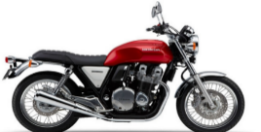

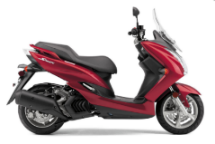
Standard/Classic
Cruiser
Scooter
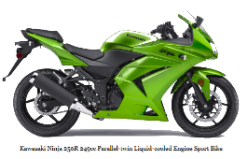
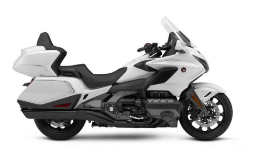

Sport Bike
Touring
Moped
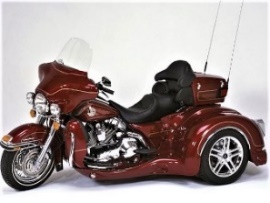
Three-wheeled Motorcycle (Trike)
For each item below, please indicate the extent to which you agree or disagree. Please select an answer for each statement.
Strongly disagree
Disagree
Slightly disagree
Neither agree nor disagree
Slightly agree
Agree
Strongly agree
I understand why someone would want to operate a motorcycle.
⃝
⃝
⃝
⃝
⃝
⃝
⃝
Drivers should take extra care to look out for motorcyclists.
⃝
⃝
⃝
⃝
⃝
⃝
⃝
Motorcyclists are typically less law abiding than other types of drivers.
⃝
⃝
⃝
⃝
⃝
⃝
⃝
Operating a motorcycle on the streets I typically travel is unsafe.
⃝
⃝
⃝
⃝
⃝
⃝
⃝
The reasons motorcyclists make some maneuvers (e.g., passing other vehicles or changing lanes) are often unclear to me.
⃝
⃝
⃝
⃝
⃝
⃝
⃝
Motorcycles are easily hidden from view by other cars on the road.
⃝
⃝
⃝
⃝
⃝
⃝
⃝
For each item below, please indicate the extent to which you agree or disagree. Please select an answer for each statement.
Strongly disagree
Disagree
Slightly disagree
Neither agree nor disagree
Slightly agree
Agree
Strongly agree
There is nothing that a driver of another vehicle can do to reduce the risks associated with motorcycle riding.
⃝
⃝
⃝
⃝
⃝
⃝
⃝
When operating a motorcycle, taking risks is part of the thrill.
⃝
⃝
⃝
⃝
⃝
⃝
⃝
It bothers me when I see other drivers not giving enough space between their vehicles and a motorcycle.
⃝
⃝
⃝
⃝
⃝
⃝
⃝
I am as comfortable driving on a road near motorcycles as I am driving near other cars.
⃝
⃝
⃝
⃝
⃝
⃝
⃝
I am as comfortable driving on a road near large trucks as I am driving near other cars.
⃝
⃝
⃝
⃝
⃝
⃝
Which of the following do you believe is the most common factor in crashes involving motorcycles?
Motorcycles not being seen by other drivers
Motorcyclists speeding or otherwise driving recklessly
Other drivers speeding or otherwise driving recklessly
Poor road conditions (e.g., due to weather or potholes)
How many of your friends or family members operate a motorcycle?
|
None |
1 |
2 |
3 or more |
Don’t know |
|
⃝ |
⃝ |
⃝ |
⃝ |
⃝ |
|
⃝ |
⃝ |
⃝ |
⃝ |
⃝ |
|
⃝ |
⃝ |
⃝ |
⃝ |
⃝ |
Interactions with Other Drivers
The following statements ask you about scenarios that involve anticipating the actions of other drivers. Please indicate the extent to which you agree or disagree with each statement.
If you operate both a motorcycle and another type of vehicle, please answer the following questions based on your experiences as a driver of a car, SUV, van, or truck, not as a motorcyclist.
|
Strongly disagree |
Disagree |
Slightly disagree |
Neither agree nor disagree |
Slightly agree |
Agree |
Strongly agree |
|
⃝ |
⃝ |
⃝ |
⃝ |
⃝ |
⃝ |
⃝ |
|
⃝ |
⃝ |
⃝ |
⃝ |
⃝ |
⃝ |
⃝ |
|
⃝ |
⃝ |
⃝ |
⃝ |
⃝ |
⃝ |
⃝ |
|
⃝ |
⃝ |
⃝ |
⃝ |
⃝ |
⃝ |
⃝ |
|
⃝ |
⃝ |
⃝ |
⃝ |
⃝ |
⃝ |
⃝ |
|
⃝ |
⃝ |
⃝ |
⃝ |
⃝ |
⃝ |
⃝ |
|
⃝ |
⃝ |
⃝ |
⃝ |
⃝ |
⃝ |
⃝ |
Turning and Passing Situations
Turning situations are those in which a vehicle makes a turn onto another road. These can occur at intersections, driveways, and parking lots.
Please indicate the extent you agree or disagree with each statement about turning situations. Remember, if you operate a motorcycle in addition to driving another type of motor vehicle, please answer these questions from your perspective and experiences as a driver of a car, SUV, van, or truck, not as a motorcyclist.
|
Strongly disagree |
Disagree |
Slightly disagree |
Neither agree nor disagree |
Slightly agree |
Agree |
Strongly agree |
|
⃝ |
⃝ |
⃝ |
⃝ |
⃝ |
⃝ |
⃝ |
|
⃝ |
⃝ |
⃝ |
⃝ |
⃝ |
⃝ |
⃝ |
|
⃝ |
⃝ |
⃝ |
⃝ |
⃝ |
⃝ |
⃝ |
|
⃝ |
⃝ |
⃝ |
⃝ |
⃝ |
⃝ |
⃝ |
|
⃝ |
⃝ |
⃝ |
⃝ |
⃝ |
⃝ |
⃝ |
Passing situations are those in which a vehicle catches up to and passes another vehicle. These typically occur on highways.
Please select the appropriate response from the options below. Remember, if you operate a motorcycle in addition to driving another type of motor vehicle, please answer these questions from your perspective and experiences as a driver of a car, SUV, van, or truck, not as a motorcyclist.
|
Never or almost never |
Not often |
Often |
Very often |
Always or almost always |
Don’t know |
|
⃝ |
⃝ |
⃝ |
⃝ |
⃝ |
⃝ |
|
⃝ |
⃝ |
⃝ |
⃝ |
⃝ |
⃝ |
The following questions ask you about judging the distance and speed of motorcycles on the road Remember, if you operate a motorcycle in addition to driving another type of motor vehicle, please answer these questions from your perspective and experiences as a driver of a car, SUV, van, or truck, not as a motorcyclist.
|
True |
False |
Don’t know |
|
⃝ |
⃝ |
⃝ |
|
⃝ |
⃝ |
⃝ |
|
⃝ |
⃝ |
⃝ |
|
⃝ |
⃝ |
⃝ |
|
⃝ |
⃝ |
⃝ |
|
⃝ |
⃝ |
⃝ |
|
⃝ |
⃝ |
⃝ |
Traffic Laws
This next section asks you questions about traffic rules and laws, and what is permitted for motorcyclists and other vehicles.
“
Splitting
lanes” is when a motorcyclist rides between two lanes
of traffic, in the same direction as traffic, when traffic is very
slow or stopped. The illustration below shows a motorcycle splitting
lanes.
Please read each statement below and indicate whether you believe the statement is true or false.
True
False
Don’t know
In [INSERT APPPROPRIATE JURISDICTION], motorcyclists are permitted to split lanes.
⃝
⃝
⃝
It is safer for everyone to allow motorcyclists to split lanes during periods of heavy congestion.
⃝
⃝
⃝
Please read each item listed below and indicate whether you believe the statement is true or false.
|
True |
False |
Don’t know |
|
⃝ |
⃝ |
⃝ |
|
⃝ |
⃝ |
⃝ |
|
⃝ |
⃝ |
⃝ |
|
⃝ |
⃝ |
⃝ |
|
⃝ |
⃝ |
⃝ |
|
⃝ |
⃝ |
⃝ |
Crashes and Near-Misses
When driving a car, SUV, van, or truck, have you ever been in a traffic crash? Select all that apply.
Yes, I have been in a crash with a motorcycle.
Yes, I have been in a crash with a vehicle other than a motorcycle (car, SUV, van, truck).
Yes, I have been in a crash with a pedestrian or a bicycle.
Yes, I have been in a crash that did not involve any other vehicles.
No, I have never been in a traffic crash.
A “near miss” is a narrowly avoided crash. When driving a car, SUV, van, or truck, have you ever experienced a near miss? Select all that apply.
Yes, I have been in a near miss with a motorcycle.
Yes, I have been in a near miss with a vehicle other than a motorcycle (car, SUV, van, truck).
Yes, I have been in a near miss with a pedestrian or a bicycle.
No, I have never experienced a near miss.
Experience Operating a Motorcycle
//ASK Q21 IF Q3 = F, G, OR H or NULL//
When was the last time you operated a motorcycle, scooter, or moped?
Within the last year
1 to 2 years ago
2 to 3 years ago
3 to 5 years ago
More than 5 years ago
//ASK Q22 IF Q21 = A//
In the past year, how often have you operated a motorcycle, scooter, or moped?
A few days a year
A few days a month
A few days a week
Every day or almost every day
When was the last time you rode as a passenger on a motorcycle, scooter, or moped?
Within the past year
1 to 2 years ago
2 to 3 years ago
3 to 5 years ago
More than 5 years ago
Never
Traffic Safety Messages
These next few questions ask about traffic safety messages about motorcycle safety that you may or may not have heard before.
Within the past year, do you remember seeing or hearing any motorcycle safety public messages?
Yes
No
Don’t know
We would like to know if you are familiar with the following messages related to motorcycle safety.
Yes
No
Don’t know
Have you ever heard the message “Share the Road?”
⃝
⃝
⃝
Have you ever heard the message “Look Twice, Save a Life?”
⃝
⃝
⃝
Have you ever heard of "Motorcycle Safety Awareness Month?”
⃝
⃝
⃝
Regardless of whether you have heard the message “Share the Road” before, in your opinion, what does it mean to “Share the Road” with motorcycles? Select all that apply.
Give motorcyclists a break/be nice to motorcyclists
Give motorcyclists extra space when passing
Don’t open your door when a motorcyclist is passing by
Don’t know/not sure
Regardless of whether you’ve heard the message “Look Twice, Save a Life” before, in your opinion, what are you being instructed to do when asked to “Look Twice, Save a Life?” Select all that apply.
Double check to make sure you are enrolled as an organ donor
Check both the rear-view and side-view mirrors before changing lanes
Double check your blind spot
Look carefully for other vehicles, especially motorcycles
Don’t know/not sure
Demographics
To close out the survey, we have a few questions on your general background and your household. Please answer them to the best of your ability.
What is your sex?
Female
Male
Are you of Hispanic, Latino, or Spanish origin?
No, not Spanish/Hispanic/Latino
Yes, Mexican, Mexican American, Chicano
Yes, other Spanish/Hispanic/Latino
Yes, Puerto Rican
Yes, Cuban
What is your race? Check all that apply.
White
Black or African American
American Indian or Alaska Native
Asian
Native Hawaiian or Pacific Islander
Some other race
Which of these categories does your total annual household income fall into, before taxes? By total annual household income, we mean the combined income of those who live in the same house as you.
Less than $10,000
Over $10,000 but less than $15,000
Over $15,000 but less than $25,000
Over $25,000 but less than $35,000
Over $35,000 but less than $50,000
Over $50,000 but less than $75,000
Over $75,000 but less than $100,000
$100,000 or more
What is the highest degree or level of education that you have completed?
Less than a high school diploma
High school graduate (or GED)
Some college, but no degree
Technical or vocational program
Associate degree
Bachelor’s degree
Post graduate degree (e.g., master’s, J.D., M.D., Ph.D.)
Is the home at which you received the invitation for this survey…
Owned by you or someone in this household? (Check this if you have a mortgage or loan, or if the home is paid off free and clear.)
Rented? (Check this if you pay rent or occupy without payment.)
What is your marital status?
Now married
Widowed
Divorced
Separated
Never married
Finally, we would
like to ask some general questions about the household that received
this survey.
How many adults are living or staying at this address?
Include all adults who are living or staying here for more than 2 months.
Include yourself if you are over the age of 18 and living here for more than 2 months.
Include any other adults staying here who do not have another place to stay even if they are here for 2 months or less.
Do not include anyone over the age of 18 who is living somewhere else for more than 2 months, such as a college student living away or someone in the Armed Forces on deployment.
How many adults age 18 or older living at this address worked for pay last week at a job or business?
You received an invitation to this survey by mail. To make sure that we have reached enough people with a variety of backgrounds and driving habits, we need to know if we reached enough people with a variety of ways they receive mail. These final questions ask about how mail is received and handled in your household.
Which of the following statements best describes how you get your mail?
My mail is delivered directly to my home in a mailbox or mail slot
My mail is delivered to a central location that’s inside my building
My mail is delivered to a central location that’s outside my building
My mail is delivered to the post office (P.O. Box)
Are there other families or households that share your mailbox and address and who were not included in your answers? Do not include other units within your building that use different unit numbers on their address.
Yes
No
Do you receive mail at any other address within the state of [SUBSTITUTE FROM SAMPLE DATA]?
Yes
No
//DISPLAY//
As a token of our appreciation for the time you have spent answering our questions, we would like to provide you with $10 in cash. Upon the submission of your completed survey, the cash will be sent to the same address at which you received the invitation to take this survey. If you would like to have it sent to a different address, please contact our survey help desk at [TBD]@forsmarshgroup.com. If you do not want to receive the $10, please check the box below.
 I
am declining the $10 cash.
I
am declining the $10 cash.
Thank you for completing our survey! Please click the “Submit” button to exit and have your responses recorded. (Web participants, only) OR Please mail back your completed survey using the pre-paid return envelope we provided. (Mail participants, only)
//END OF SURVEY//
| File Type | application/vnd.openxmlformats-officedocument.wordprocessingml.document |
| Author | Wochinger, K |
| File Modified | 0000-00-00 |
| File Created | 2022-06-29 |
© 2025 OMB.report | Privacy Policy